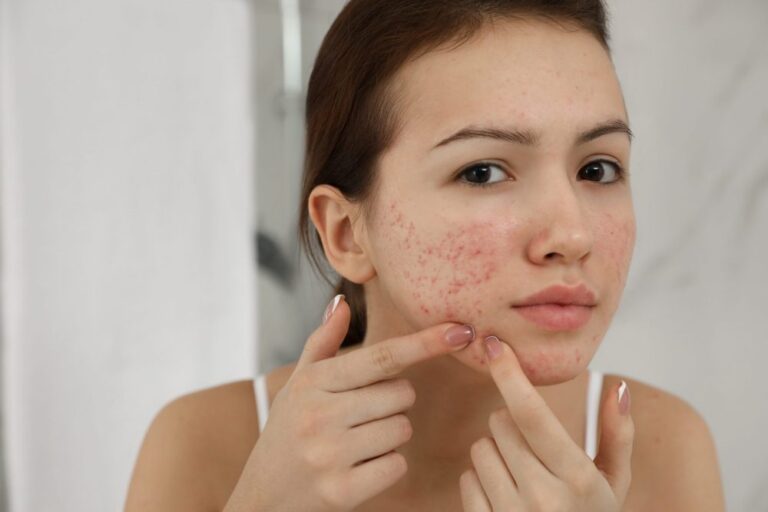The Post Surgical Scars Treatment in Lahore, aims to address the body’s healing response after an injury, trauma, or surgery, aiding in the repair of damaged skin and tissues. However, these scars can sometimes impact aesthetics, particularly when they occur in noticeable areas.
While certain scars naturally diminish over time, others tend to persistently stand out. In particular, post-surgical scars often prove challenging and can significantly alter one’s appearance.
Post Surgical Scars Treatment in Lahore, Pakistan
Thankfully, a range of treatments for post-surgical scars exists today, offering opportunities to enhance skin appearance and minimize the visibility of scarring
Causes Post-Surgical Scarring
Post-surgical scarring occurs as the skin undergoes healing following a surgical incision or injury. During this process, the body generates tissue to repair the damaged area, with collagen, a natural protein responsible for binding skin tissues, playing a pivotal role in skin restoration. Nevertheless, variations in collagen production can lead to visible scarring. People are ready to get the treatment in lahore.
Several factors can affect collagen production at the site of the incision:
- Location of the incision.
- Depth of the incision.
- Individual skin type.
- Aging, leading to reduced skin elasticity.
- Tension levels in the skin around the incision.
- Genetic predispositio
Different types of surgical scars commonly encountered include:
Hypertrophic scars: These scars present as thick, raised, red bumps confined within the incision boundary, resulting from an excess of collagen production.
Keloid scars: Similar to hypertrophic scars, keloid scars are red, raised, and thick, caused by an overgrowth of collagen. However, they extend beyond the original wound’s boundaries.
Atrophic scars: These scars are characterized by indentations or depressions in the skin, arising from inadequate collagen production, leading to improper healing.
Treatments for Post-Surgical Scars:
Treatment options for post-surgical scars encompass both surgical and non-surgical procedures.
Your physician might recommend surgical interventions to address your post-surgical scars. These commonly include:
Incision Placement:
Strategic incision placement aims to minimize scarring during surgery. It involves specific techniques:
Location: Choosing less visible areas like creases, skin folds, or regions covered by clothing or hair.
Incision Direction: Creating cuts along the skin’s natural tension lines or parallel to them.
Length: Keeping incisions as precise and small as possible.
Layered Closure: Ensuring even distribution of tension by closing deeper layers first.
Scar Excision:
This method effectively improves raised surgical scars by removing scar tissue and suturing the surrounding skin.
Skin Grafting:
Utilizing skin from less visible body areas to replace or cover damaged scar tissue, customized to individual needs.
Z-Plasty:
Creating triangular skin flaps through incisions to redistribute tension along the scar, enhancing appearance and improving tissue movement. Ideal for scars crossing natural tension lines.
Autologous Fat Transfer:
For deeply depressed scars due to lost subcutaneous fat tissue, using one’s body fat as a filler to enhance appearance and prevent tissue adhesion.
Certainly! Here’s a rephrased version:
Non-surgical treatments offer diverse options to enhance the look of post-surgical scars and alleviate associated discomfort or irritation.
Topical Solutions:
The following topical solutions are commonly used to diminish the appearance of post-surgical scars:
Silicone sheets or gel
Topical vitamin E
Mederma
Hydrocortisone cream
Topical retinoids
Topical antibiotics
It’s crucial to use these topical solutions under the guidance of a qualified practitioner.
Intralesional Cryotherapy:
This minimally invasive technique aims to diminish scar appearance by selectively damaging scar tissue. By injecting liquid nitrogen into the scar, localized tissue damage occurs, fostering skin healing and reducing scar visibility over time.
Non-Ablative Laser Treatment:
Non-ablative fractional lasers can effectively address certain post-surgical scars. These lasers target scar tissue, initiating a healing response by stimulating collagen production, which continues for weeks after treatment. This process remodels scar tissue, resulting in diminished scarring.
Ablative Laser Treatments:
Ablative laser therapy is effective for various post-surgical scars. Using focused laser light, it removes the top skin layer, prompting the growth of a rejuvenated layer and stimulating collagen production for improved scar appearance.
CO2 and Er: YAG lasers are commonly used ablative types, encouraging a healing response that gradually enhances scar appearance.
Soft-Tissue Fillers:
Temporary solutions for significantly depressed post-surgical scars involve soft-tissue fillers. These fillers, like Juvederm, Sculptra, Radiesse, and Restylane, elevate depressed skin areas, improving the scar’s appearance when injected into the target area.
Aftercare and recovery post-treatment:
Aftercare and recovery post-treatment for post-surgical scars vary based on the procedure undergone. Surgical interventions typically entail a more extended recovery period and demand cautiousness.
Conversely, non-surgical procedures involve minimal recovery time, often allowing an immediate return home or to work after treatment.
Adhering to your practitioner’s guidance post-treatment is crucial for optimal results, irrespective of the procedure chosen.
Post Surgical Scars Treatment in Lahore
These procedures for facial scar revision in Lahore, and Pakistan range in price from 6,500 to 30,000 PKR overall.






